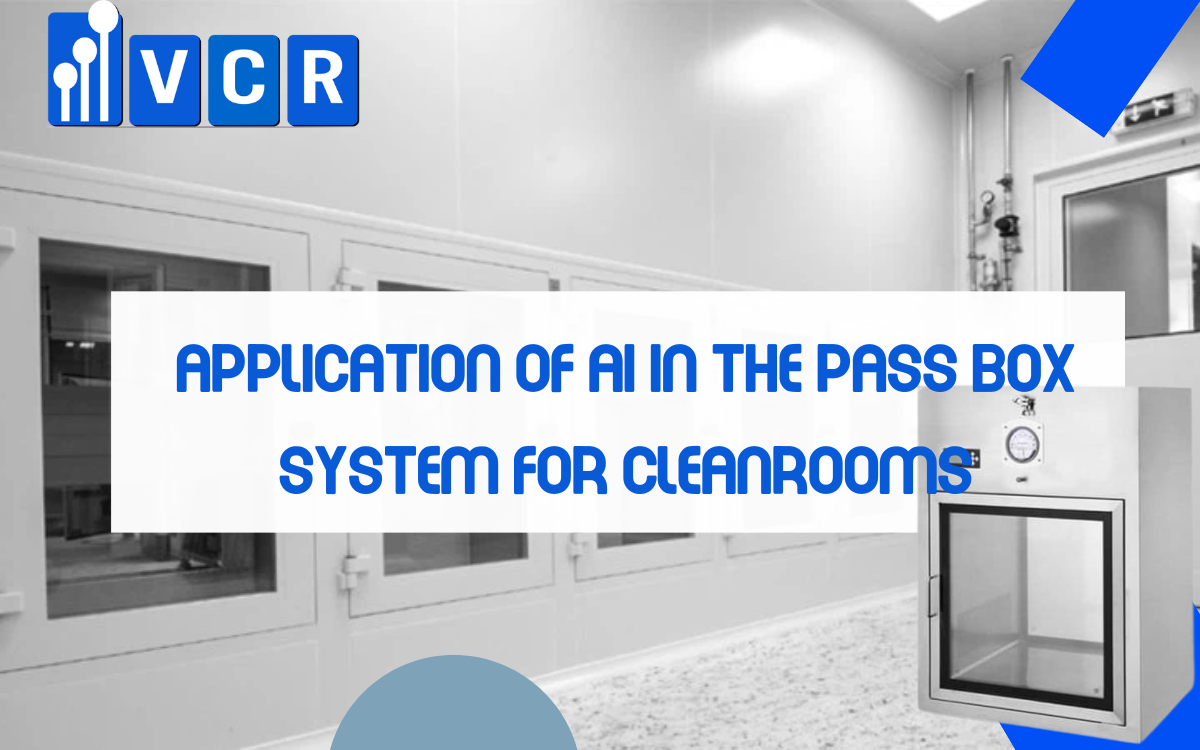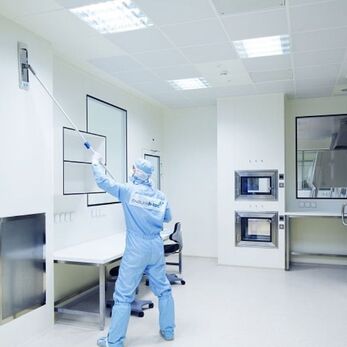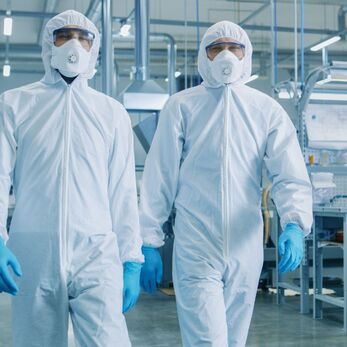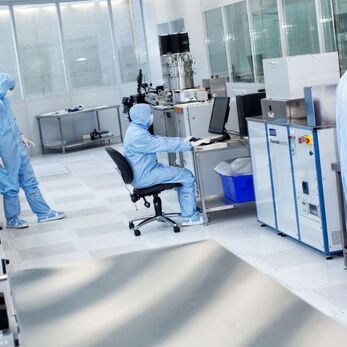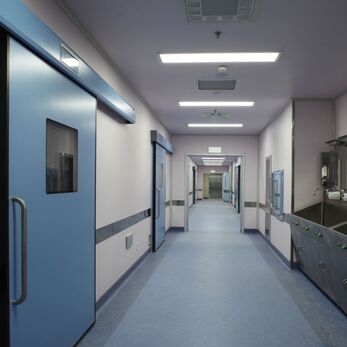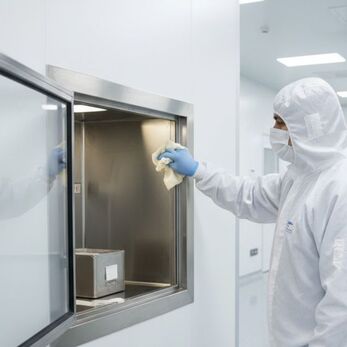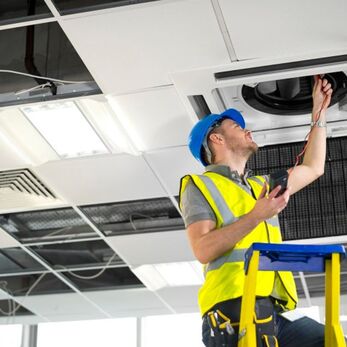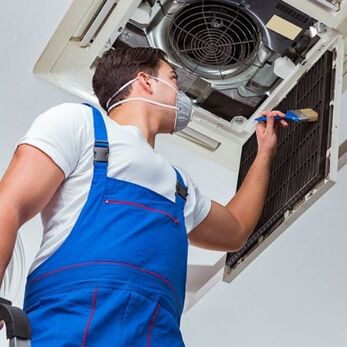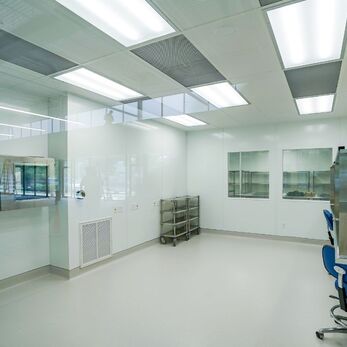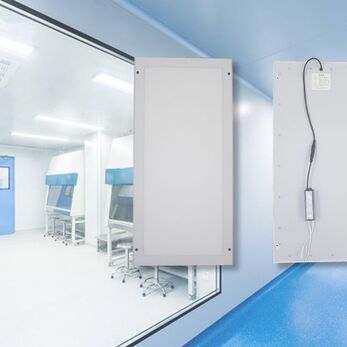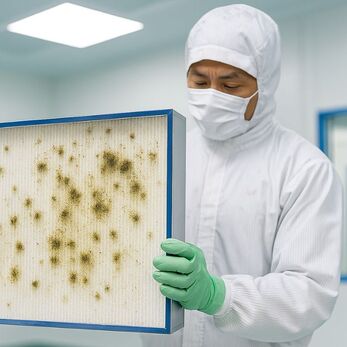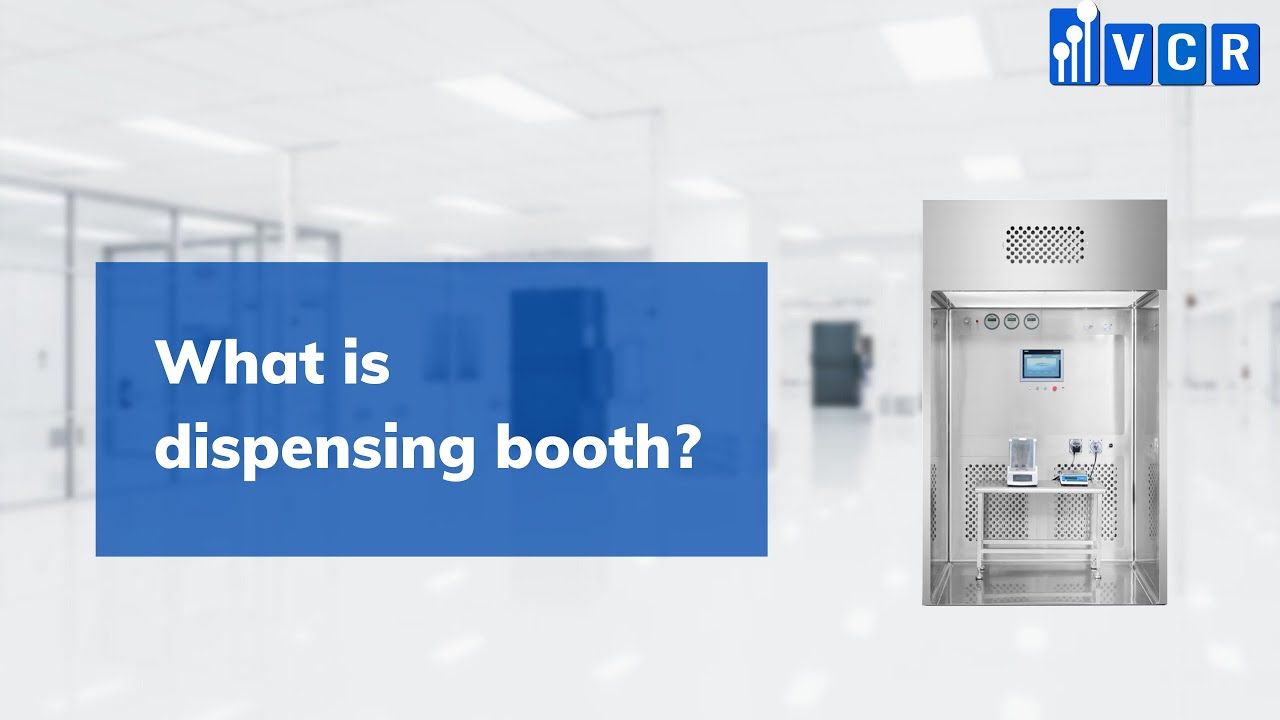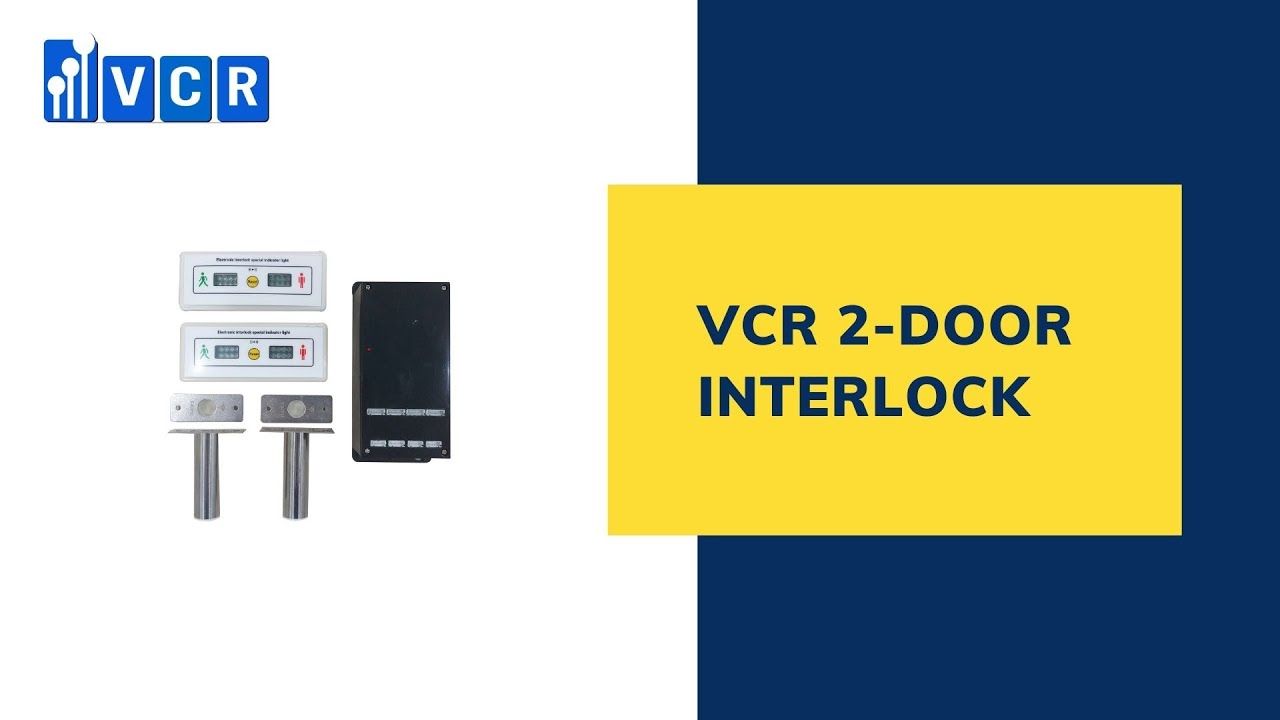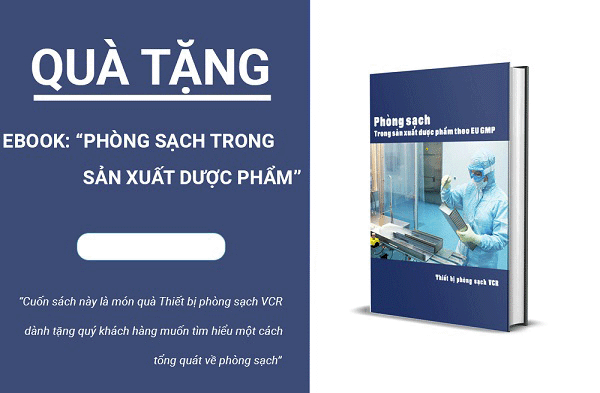Application of AI in the Pass Box System for Cleanrooms
The application of AI in Pass Box systems for cleanrooms enhances automation, accuracy, and contamination control. By integrating image recognition, RFID tracking, and real-time monitoring, AI-powered Pass Boxes reduce human errors, prevent cross-contamination, and optimize efficiency, ensuring compliance with GMP, ISO, and FDA.
I. Introduction to Pass Box in Cleanrooms
What is a Pass Box? Its Role in Cleanroom Systems
A Pass Box is an essential tool in cleanroom environments, designed to safely transfer materials between areas of varying cleanliness levels while minimizing contamination risks. It acts as an airlock for objects, reducing unnecessary human movement and preventing contaminants from entering the controlled space.
Key Roles of a Pass Box in Cleanrooms
- Prevents cross-contamination: Controls airflow and limits direct contact between different cleanroom zones, reducing airborne particles and microbial exposure.
- Enhances operational efficiency: Allows seamless material transfer without disrupting cleanroom integrity.
- Maintains cleanroom standards: Ensures compliance with industry regulations such as GMP, ISO 14644, and FDA guidelines.
Types of Pass Boxes Available on the Market
- Standard Pass Box (Static Pass Box)
A Static Pass Box is a simple design with interlocking doors, preventing both doors from opening simultaneously. It is primarily used to transfer materials between areas with similar cleanliness levels and does not have air filtration or sterilization features.
✅ Best for: Low-contamination-risk environments where basic containment is sufficient.
- Dynamic Pass Box (Active Pass Box)
A Dynamic Pass Box is equipped with HEPA/ULPA filtration, maintaining controlled airflow to eliminate dust and contaminants before materials enter a cleanroom.
✅ Best for: Pharmaceuticals, biotechnology, and semiconductor industries that require strict air filtration when moving items from lower to higher cleanliness zones.
- VHP Pass Box (Vaporized Hydrogen Peroxide Pass Box)
This advanced Pass Box integrates VHP sterilization technology to decontaminate objects before entering the cleanroom. The VHP cycle kills bacteria, viruses, and spores, making it ideal for industries requiring high sterilization levels.
✅ Best for: Pharmaceutical manufacturing, medical devices, and hospitals where sterility is critical.
- Pass Box with UV Sterilization
This type of Pass Box uses UV-C light to disinfect item surfaces, effectively neutralizing bacteria, fungi, and viruses before transfer.
✅ Best for: Laboratories, food processing, and healthcare facilities needing an extra layer of sterilization.
Challenges in Item Transfer and Contamination Risks
- Risk of Cross-Contamination
If items are not properly sanitized before transfer, contaminants like bacteria, dust, and microbes can enter the cleanroom, jeopardizing production quality. Surfaces like door handles and trays can also become contamination hotspots if not regularly disinfected.
- Human Errors in Operation
Manual handling mistakes, such as simultaneous door opening, can disrupt airflow balance and allow contaminated air to enter the cleanroom. Inconsistent sanitization procedures and lack of proper training can further increase contamination risks.
- Lack of Tracking and Monitoring
Traditional Pass Boxes rely on manual record-keeping, leading to inaccuracies and limited traceability of item transfers. Without real-time tracking, it becomes challenging to enforce cleanroom safety protocols effectively.
How to Overcome These Challenges?
AI-powered Pass Box solutions can revolutionize contamination control by integrating automated monitoring, AI-based recognition, and digital tracking, ensuring higher efficiency, safety, and regulatory compliance in cleanroom operations.
II. AI and Its Potential Applications in Pass Box Systems
How AI Enhances Pass Box Technology
Artificial Intelligence (AI) is revolutionizing cleanroom management by automating and optimizing the Pass Box system. AI enables real-time monitoring, tracking, and classification of items, reducing contamination risks and enhancing efficiency. By integrating image recognition, barcode scanning, RFID, and data analytics, AI improves accuracy, minimizes human intervention, and ensures compliance with strict cleanroom standards.
AI Capabilities in Pass Box Systems
- Image Recognition for Automated Item Identification
AI-powered computer vision technology enables real-time image recognition, allowing Pass Box systems to:
- Identify and classify items before they enter the cleanroom.
- Detect potential contamination risks, such as unauthorized or improperly sanitized objects.
- Verify compliance with cleanroom material handling protocols.
- Barcode Scanning and RFID for Smart Tracking
By integrating RFID (Radio Frequency Identification) and barcode scanning, AI allows for seamless item tracking and authentication.
✅ Benefits:
- Ensures only authorized items enter the cleanroom.
- Tracks movement history and usage logs for better inventory management.
- Prevents the entry of non-compliant or contaminated materials.
- AI-Powered Data Analysis for Process Optimization
AI processes large amounts of data in real time, helping to:
- Monitor usage patterns and contamination trends.
- Identify anomalies or risks, triggering alerts for potential cleanroom violations.
- Provide predictive maintenance alerts, ensuring Pass Box systems remain operational.
AI Assists in Tracking, Monitoring, and Automatically Classifying Items
AI enhances the tracking and monitoring process, ensuring that every item passing through the system is properly classified, logged, and verified.
Automated Tracking – AI records each transfer event, linking items to specific users and time stamps.
Continuous Monitoring – AI continuously analyzes environmental conditions, detecting potential contamination risks.
Intelligent Classification – AI categorizes items based on risk levels, determining appropriate sterilization or quarantine measures.
Reducing Human Errors and Enhancing Cleanroom Efficiency
- Eliminating Manual Errors
Traditional Pass Box operations rely heavily on human judgment, increasing the risk of errors such as:
❌ Incorrect item handling.
❌ Non-compliance with sterilization protocols.
❌ Simultaneous door openings, disrupting air pressure control.
AI removes human subjectivity, ensuring consistent and error-free operations.
- Enhancing Efficiency Through Automation
AI-driven automation accelerates item processing, reducing transfer times and improving overall cleanroom workflow.
✅ Faster inspections – AI verifies and approves materials in seconds.
✅ Seamless integration – AI-enabled Pass Boxes connect with cleanroom monitoring systems for real-time updates.
✅ Improved compliance – AI enforces GMP and ISO standards, ensuring all processes meet regulatory requirements.
III. How AI Identifies Items in the Pass Box
AI-Powered Image Recognition: Smart Cameras for Object Detection
AI-driven computer vision technology allows Pass Box systems to automatically detect, classify, and verify objects before they enter a cleanroom.
How It Works:
- Smart cameras scan items in real-time, analyzing their shape, size, color, and texture to ensure compliance with cleanroom standards.
- AI algorithms compare the scanned image with a database to confirm that the item is pre-approved for entry.
- Contaminated, unauthorized, or foreign objects are flagged for further inspection or rejection.
✅ Key Benefits:
- Eliminates manual checking errors.
- Ensures only approved materials enter the cleanroom.
- Reduces contamination risks by automating quality control.
RFID and QR Code Integration: Smart Tracking and Verification
RFID and QR codes provide real-time item authentication, ensuring that only authorized materials pass through the system.
How It Works:
- RFID tags or QR codes are attached to each item before transfer.
- The Pass Box scans the RFID signal or QR code to verify details such as origin, sterilization status, and entry permissions.
- AI cross-checks this data with the cleanroom management system to approve or reject entry.
✅ Key Benefits:
- Tracks each item's movement and history.
- Reduces human intervention, preventing data entry errors.
- Helps maintain GMP and ISO cleanroom compliance.
Automated Alerts and Control: AI Detects Contamination Risks
AI continuously monitors and analyzes environmental factors, ensuring all materials meet cleanliness standards.
How It Works:
- AI detects dust, residues, or microbial contamination using infrared, UV, or spectral analysis.
- If contamination risks are identified, the system automatically denies access and triggers alerts.
- AI monitors Pass Box door interlocking, ensuring that doors do not open simultaneously to maintain air pressure balance.
✅ Key Benefits:
- Prevents cross-contamination by rejecting non-compliant items.
- Ensures sterilized conditions within the Pass Box.
- Enhances safety by enforcing cleanroom protocols in real-time.
Data Recording and Tracking: Compliance and Audit-Ready Documentation
AI-powered Pass Boxes store and manage detailed logs of every item transferred.
How It Works:
- Each item’s movement is recorded in a digital database, including timestamps, operators, and status.
- AI generates real-time reports, allowing quick traceability in case of contamination incidents.
- The system integrates with cleanroom ERP and QMS software, ensuring regulatory compliance.
✅ Key Benefits:
- Provides full traceability for audits and quality control.
- Prevents unaccounted item transfers, ensuring regulatory compliance.
- Improves data accuracy by eliminating manual record-keeping.
IV. Benefits of Applying AI to the Pass Box System
Reduced Cross-Contamination Risk: Minimizing Human Interaction
One of the biggest challenges in cleanroom environments is the risk of cross-contamination during material transfers. AI-powered Pass Box systems help reduce contamination risks by automating processes and limiting human interaction.
How AI Minimizes Contamination Risks:
- Hands-free operation: AI automates item verification and transfer, eliminating the need for manual handling.
- Smart detection: AI scans items for dust, microbes, or contaminants, rejecting any non-compliant objects.
- Controlled access: AI ensures that only pre-approved, sterilized materials enter the cleanroom.
✅ Key Benefits:
- Prevents bacteria and particle contamination.
- Reduces human error in item handling.
- Maintains strict cleanroom hygiene protocols.
Enhanced Accuracy: Reducing Errors in Item Identification and Monitoring
Traditional Pass Boxes rely on manual inspection, which increases the risk of errors and inconsistencies. AI eliminates human subjectivity, ensuring precision and reliability in item tracking and verification.
How AI Improves Accuracy:
- Image recognition technology identifies and verifies items instantly.
- RFID and QR code scanning ensure 100% correct item tracking.
- AI-powered monitoring detects any anomalies in item status or handling procedures.
✅ Key Benefits:
- Ensures only approved items enter the cleanroom.
- Prevents misplaced or unidentified materials from contaminating critical areas.
- Reduces manual errors, increasing operational reliability.
Automation and Efficiency: Faster Inspection and Processing
AI-driven Pass Box systems accelerate item transfer by automating inspection and verification, reducing delays and bottlenecks in cleanroom operations.
How AI Boosts Efficiency:
- Automated material inspection eliminates the need for manual review.
- Instant AI-based approval or rejection speeds up decision-making.
- Real-time alerts inform operators about transfer status, eliminating downtime.
✅ Key Benefits:
- Reduces waiting time for material transfer.
- Increases cleanroom productivity.
- Frees up human resources for more critical tasks.
Digital Data Integration: Easy Traceability and Real-Time Monitoring
AI integrates with cleanroom management systems, allowing real-time tracking and comprehensive audit trails for all item transfers.
How AI Enhances Data Management:
- Automatic logging of each transfer event, including time, operator, and item details.
- Full traceability in case of contamination or regulatory audits.
- Seamless integration with ERP and QMS software for real-time monitoring.
✅ Key Benefits:
- Enables quick identification of contamination sources.
- Enhances regulatory compliance and reporting.
- Improves overall cleanroom process transparency.
V. Real-World Applications and Future Development of AI in Pass Box Systems
Industries Implementing AI in Pass Box Systems
AI-powered Pass Box systems are being widely adopted in industries where contamination control is critical. These industries rely on automated monitoring, precise material verification, and real-time tracking to maintain the highest cleanliness standards.
- Pharmaceuticals
Pharmaceutical cleanrooms require strict contamination control to ensure the safety and efficacy of drugs and vaccines. AI-driven Pass Boxes help by:
- Automating material sterilization verification before entry.
- Tracking batch movement to maintain compliance with GMP and FDA regulations.
- Reducing human interaction in high-risk cleanroom zones.
- Semiconductor Manufacturing
Microelectronics production demands ultra-clean environments since even microscopic particles can damage delicate components. AI integration helps by:
- Detecting airborne contaminants before materials enter fabrication areas.
- Ensuring proper handling and classification of sensitive electronic components.
- Maintaining an automated audit trail for quality control and traceability.
- Food Processing
Food safety regulations require sterile conditions to prevent bacterial contamination. AI in Pass Boxes enhances food production hygiene by:
- Verifying raw material cleanliness using RFID and image recognition.
- Ensuring compliance with food safety standards such as HACCP and ISO 22000.
- Tracking material movement to prevent contamination during processing.
- Healthcare and Laboratories
Hospitals, research labs, and biotech firms use AI-integrated Pass Boxes to:
- Ensure sterile medical supplies and samples are properly disinfected.
- Monitor material transfer logs to track possible contamination sources.
- Reduce human handling risks in biosafety-level (BSL) laboratories.
Future Advancements and AI Technology Improvements for Cleanroom Systems
The evolution of AI and machine learning will continue to refine Pass Box technology, improving cleanroom efficiency and compliance. Key future developments include:
- AI-Driven Predictive Maintenance
- AI will analyze real-time performance data to predict when filters, UV sterilization units, or RFID scanners need maintenance.
- This will prevent unexpected equipment failures and reduce downtime.
- Advanced Machine Learning for Smarter Contamination Detection
- AI will continuously learn from past contamination incidents, improving its ability to detect anomalies in material transfers.
- AI-powered spectral analysis will help identify invisible contaminants on surfaces.
- IoT Integration for Smart Monitoring
- Pass Boxes will integrate with IoT sensors to monitor environmental parameters, such as temperature, humidity, and air pressure.
- AI will adjust air purification and sterilization levels dynamically to maintain cleanroom conditions.
Potential Integration of AI with Other Cleanroom Environmental Control Systems
To create fully automated cleanroom ecosystems, AI-powered Pass Boxes will integrate with other cleanroom control technologies:
- AI-Integrated Air Showers
- AI will automate decontamination cycles based on material contamination levels.
- Smart sensors will detect unclean surfaces and adjust airflow intensity accordingly.
- FFU (Fan Filter Unit) and Air Filtration Control
- AI will monitor airborne particle levels and optimize HEPA/ULPA filter efficiency.
- Predictive AI maintenance alerts will ensure timely filter replacements.
- AI-Driven Environmental Monitoring
- AI will synchronize Pass Box operation with cleanroom temperature, humidity, and airflow controls.
- This will help maintain ISO and GMP cleanroom classifications with minimal human intervention.
VI. Conclusion
AI is transforming Pass Box operations and cleanroom management by introducing automation, real-time monitoring, and intelligent contamination control. With capabilities such as image recognition, RFID tracking, automated alerts, and data integration, AI-powered Pass Boxes eliminate human errors, reduce cross-contamination risks, and enhance efficiency in cleanroom environments.
By optimizing material transfer processes, AI ensures that cleanrooms maintain the highest standards of hygiene, compliance, and operational efficiency. Industries such as pharmaceuticals, semiconductor manufacturing, food production, and healthcare can greatly benefit from AI-integrated Pass Box systems, which improve traceability, reduce downtime, and enhance regulatory compliance.
Invest in AI-Powered Pass Box Solutions with VCR
To stay competitive in cleanroom technology, businesses should invest in advanced Pass Box systems with AI integration. At VCR, we offer high-quality cleanroom equipment, including intelligent Pass Boxes designed to meet industry-specific requirements.
Optimize your cleanroom operations with AI-powered Pass Box solutions
Ensure compliance with GMP, ISO, and FDA standards
Enhance efficiency, traceability, and contamination control
Contact us today for expert consultation!
Email: [email protected]
Website: https://vietnamcleanroom.com
Hotline: 090.123.9008 (Zalo 24/7)
Upgrade your cleanroom technology with VCR – the trusted cleanroom equipment provider!






